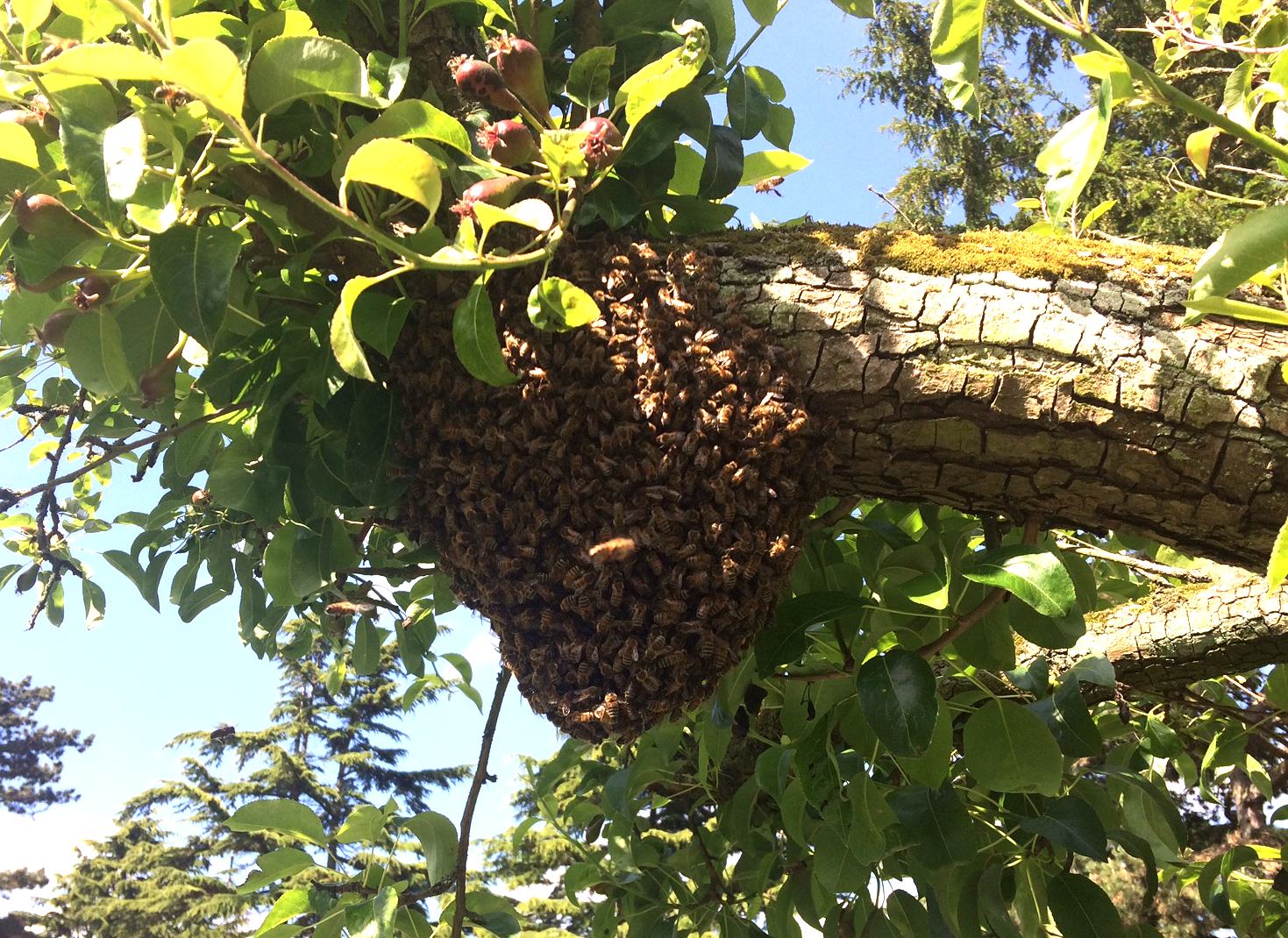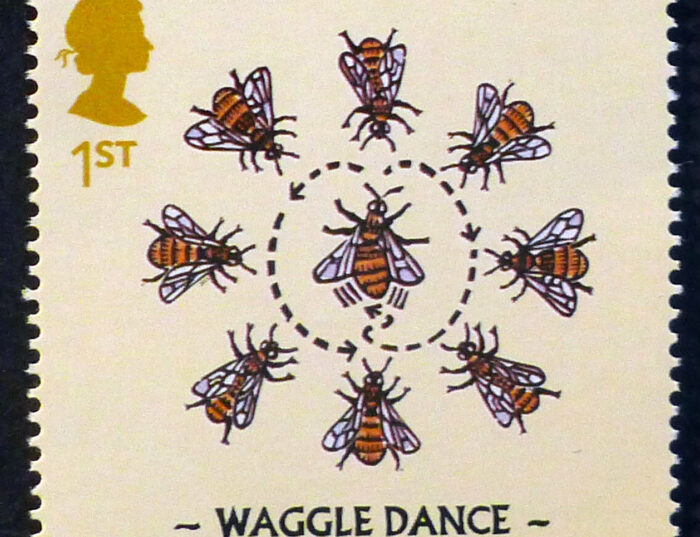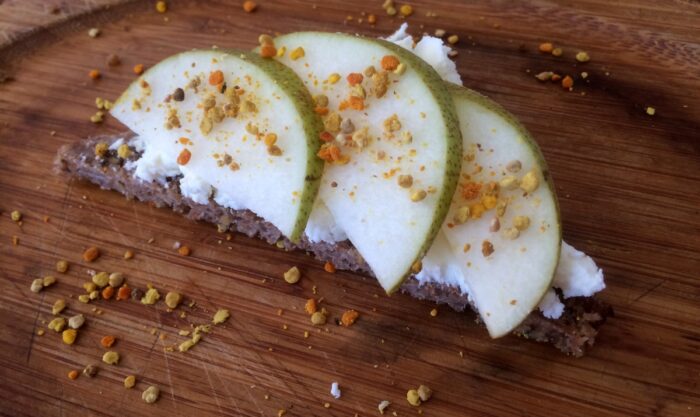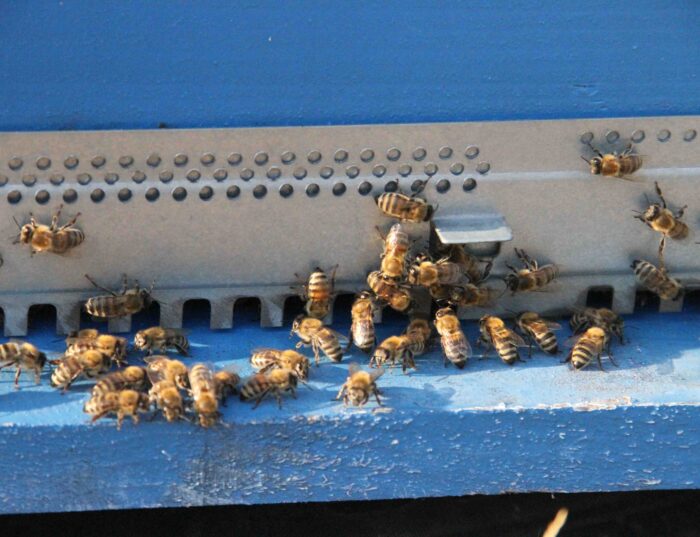After some time the swarm will depart to the new hive in one or more steps, and may even bivouac outside if the weather is fine. The swarm is usually extremely passive in nature. They will defend themselves if threatened, but will usually tolerate gentle handling and close proximity. This is due to the fact that they need every bee to work towards the new hive, and cannot afford to loose bees unnecessarily. They need to preserve the young bees within their numbers (only these can produce wax) and they need every drop of honey the swarm carries to manufacture new wax comb (7-10Kg of honey per kg of wax), and obviously a larger swarm will find it easier to defend their new site until the queen can start laying. Aggressive swarms may deplete their numbers to such a point that they are no longer viable, and may have to rejoin the old colony. Once they are inside the new site, and have begun to produce comb for stores and brood, they will no longer be so passive. Now they will readily defend their new home with their lives.
Back inside the old hive site, once the excitement of the issuing swarm has died down, the remaining colony prepares to welcome their new queen or queens. Around two weeks before swarming, worker bees will have prepared multiple peanut-shaped Queen cells, complete with an egg. These are fed exclusively on royal jelly and pollen, and around swarming time the new Queens will be close to emergence. The first virgin Queen to emerge will sting her regal sisters to death in their cells, in a brutal battle royale before they can challenge her rule. The Queen is unique in that she has no barb on her stinger and so can sting multiple times. If the colony is still large and well stocked, they may prevent the Queen from destroying her sisters and instead issue one or multiple subsequent swarms.
Virgin Queens will wait for good weather before flying to a drone congregation area, where they mate with multiple males, storing their sperm in a spermatheca (sperm bladder)to use later. Fertilised eggs (diploid) result in workers and Queens. Unfertilised eggs (haploid) result in drones. Virgin Queens must make their mating flights within a week of emergence, or the duct leading to the spermathecal will narrow, not allowing normal mating function. This will result in a drone-laying Queen and the colony to fail.




